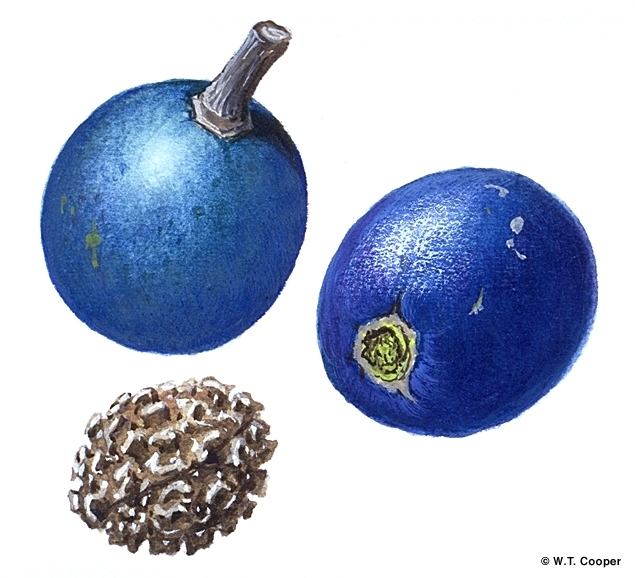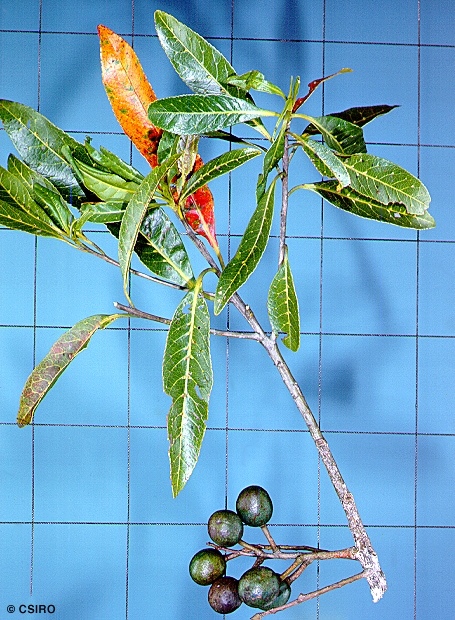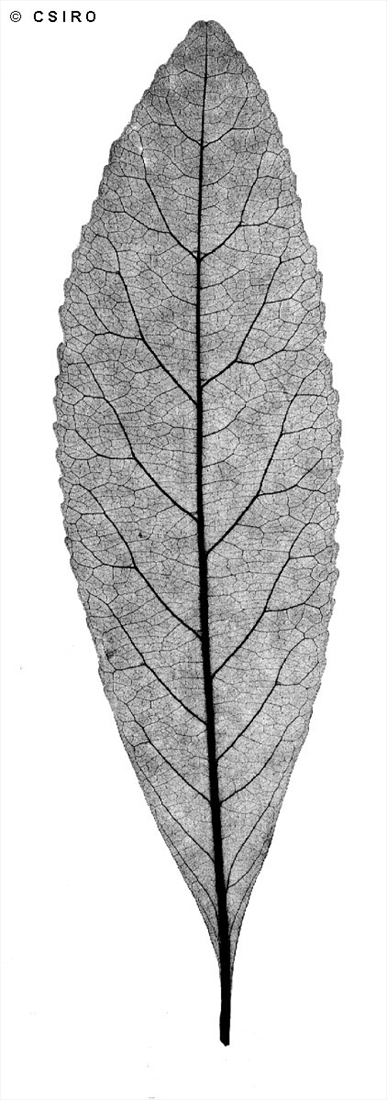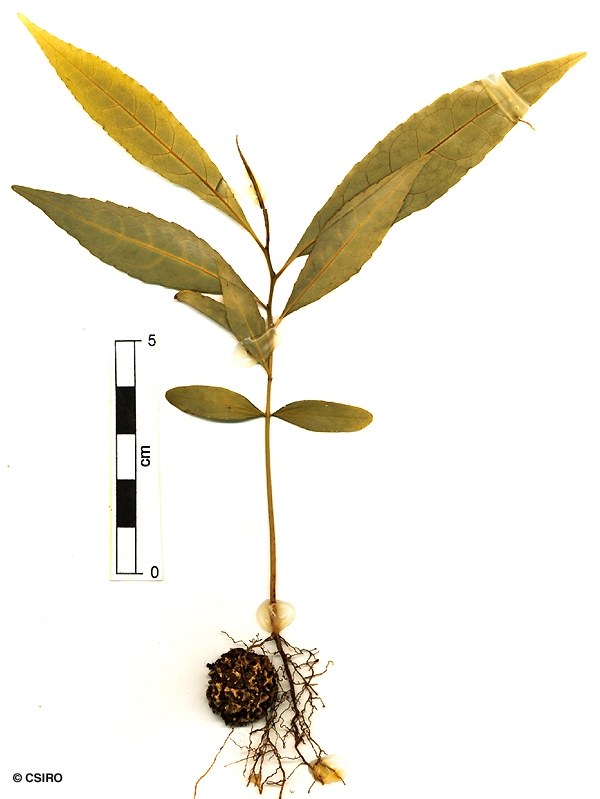Australian Tropical Rainforest Plants - Online edition
Elaeocarpus grandis F.Muell.






Blume, C.L. von (1827) Bijdragen tot de Flora van Nederlandsch Indie No. 7 : 120. Type: in montosis Provinciae Buitenzorg.
Buttresses normally conspicuous, even on small trees. Branches generally in whorls, particularly on small trees. Crown thin, the leaves occurring only on extremities.
Leaf blades about 8-15 x 2.5-4.5 cm, gradually narrowed into the petiole which lacks a pulvinus. Foveoles not only in the forks of the lateral veins and the midrib but also in the forks where the lateral veins branch. Old leaves turn bright red on the tree prior to falling. About 25-55 teeth on each side of the leaf blade.
Cotyledons sessile, narrowly elliptic, about 20-25 x 6-8 mm, apex obtuse, base attenuate. At the tenth leaf stage: leaf blade elongate-elliptic, apex acuminate, base attenuate, glabrous on the upper surface, margin crenate, teeth numerous, each ending in a hair-like tip; domatia are small crater-like foveoles along the midrib. Seed germination time 229 to 1258 days.
This is one of the fastest growing species in the rainforest particularly following logging or any other major disturbances. Individual trees can grow to large dimensions in quite short periods of time. This sort of growth has led to some quite exaggerated claims about the growth potential of rainforest species in plantations. A basic knowledge of tree architecture, crown dimensions, stocking rates and stem increment will soon expose the folly of the growth claims.
Fruit eaten by several species of birds including Cassowaries. Flesh and seeds of fallen fruit eaten by Musky Rat-Kangaroos. Cooper & Cooper (1994).
A useful, soft, lightweight carving timber, also suitable for barrels (cooperage). Swain (1928).
Fruits of the tropical rudraksha tree, Elaeocarpus angustifolius, are a brilliant, iridescent blue-a color produced not by anthocyanin pigments as in other blue fruits, but by physical interference. Such structural coloration, common in insects and animals but virtually unknown in plants, is discussed by David W. Lee in 'Iridescent Blue Plants'. In the epidermal cells of rudraksha fruits, cellulose layers form a special structure outside the cell membrane but inside the cell wall. The layers create constructive thin-film interference with blue light (thus reflecting the blue color). Lee, D. W.(1997) American Scientist 85 (1)
Wood specific gravity 0.49. Cause et al. (1989).





